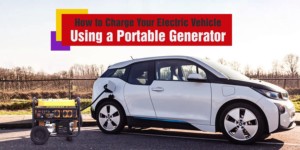Meanwhile, 122 years later….
 On June 26, 1898, the P1 officially rolled out onto the streets of Vienna, Austria. The Egger-Lohner electric vehicle, C.2 Phaeton model or “P1” for short, is the world’s first Porsche. It was designed by Ferdinand Porsche and is considered to be the first stepping stone before he and his son created Porsche the company. The vehicle resembles a wooden crate or an old horse-drawn carriage, but it is actually an electric motored vehicle.
On June 26, 1898, the P1 officially rolled out onto the streets of Vienna, Austria. The Egger-Lohner electric vehicle, C.2 Phaeton model or “P1” for short, is the world’s first Porsche. It was designed by Ferdinand Porsche and is considered to be the first stepping stone before he and his son created Porsche the company. The vehicle resembles a wooden crate or an old horse-drawn carriage, but it is actually an electric motored vehicle.
Fast forward 122 years and Porsche launch the Taycan – an electric car! 122 years, later we conclude that electric power for vehicles is probably the way to go!
First Adopters – Do You Want One of These?
Chris Harris from Top Gear gives a pretty frank review of the Taycan and opinion on the market. His conclusion seems to be that 122 years ago you likely would look at the P1 and think, maybe I’ll wait, things will likely get much better from here. So it is with the Taycan – technology moves on at such a rapid rate that within 10 years we’ll likely be laughing at the Taycan’s 200 mile range or 2.4 tons in weight. Remember the first mobile phone?
There’s no denying the Taycan is about as good as it gets right now but, like the P1 in it’s hey day, there’s a long way to go and problems to overcome before the EV is the primary solution to everyday transport. Right now, the potential is being explored and the Taycan is really the first of a new breed – proper car dynamics and EV technology as the Stig found out:
We Need More Power
Most of us have spent the last few years making sure we have LED lighting and energy efficient appliances to reduce our electrical supply usage. Now here comes this big battery we’re going to plug in and suck up power on a regular basis. Where is that extra electricity coming from?
The Taycan is rated at 49KWh per 100 miles. So if you do 150 miles a week or 7000 per year, you’ll need to charge the car at least 35 times or consume approx. 3430 KWh of power. The average US house consumes 900 KWh per month or 10,000 KWh per year. Essentially, driving the Taycan 7K miles per year will ad 30% to your electric bill. That’s not too bad considering what you save on gas. The question, however, is where does that extra 30% of electricity supply come from?
Right now, a hot summer seems to stretch the supply side of the electrical industry to the limit. What happens when everyone starts plugging in their EV or two or three? Demands on the power generators will jump dramatically. How do we make electricity today?
- 63% Fossil fuels (gas, coal etc.)
- 20% nuclear
- 7% hydro
- 6.5% wind
- 3.5% other including solar at 1.5%
 So, where do we get all that additional electrical power from? Build more nuclear power stations? Not popular. Build more dams and hydro – expensive and not easy at all. Cover our wonderful countryside with ugly windmills? Or burn more fossil fuels?
So, where do we get all that additional electrical power from? Build more nuclear power stations? Not popular. Build more dams and hydro – expensive and not easy at all. Cover our wonderful countryside with ugly windmills? Or burn more fossil fuels?
Some say the answer lies in a small gas powered generator you fire up every night to charge the car!